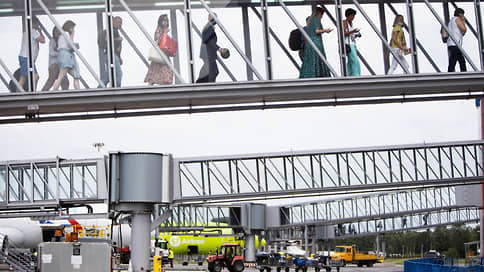Ajar sky
[ad_1]

Kaliningrad Khrabrovo Airport received an open skies regime: now, in theory, foreign airlines will be able to fly from Kaliningrad not only to their own countries, but also to others, including Europe. So far, however, there are no agreements with foreign carriers. Experts consider the decision to liberalize flights reasonable, but doubt that many foreign players will come to Kaliningrad in the face of the already adopted sanctions and potential sanctions risks.
Kaliningrad airport will receive an open skies regime, reported Rosaviatsiya September 30th. This status should improve the transport accessibility of the region and solve the problem of cargo transportation amid the closure of EU airspace, as well as restrictions on the movement of goods across the borders of Poland and the Baltic countries.
The open skies regime will allow foreign carriers to fly to other countries without landing in their home region.
Now only two international players operate flights from / to Khrabrovo: the Turkish Airlines subsidiary AnadoluJet flies to Antalya, and Belavia – to Minsk. From October 1, they can fly to other countries from Kaliningrad if they have permission from these countries for such flights. In theory, this could make it possible to establish air links with Europe via Kaliningrad.
But, as a source in Novaport (the holding owns Kaliningrad Airport) told Kommersant, Khrabrovo has no preliminary agreements with any of the foreign carriers. At the same time, the airport hopes that the preventive simplified regime, introduced at their request in record time, will help attract new players as early as October.
Russia has long been discussing extending the open skies regime to a number of airports, but so far the process has been sluggish, as the aviation authorities feared that Russian airlines would lose passenger traffic in favor of foreign airlines. So, since 2020 in Pulkovo introduced an open skies regime for 30 European countries for five years, but due to the outbreak of the pandemic, it did not fully work. According to a Kommersant source in the Ministry of Transport, now the department “has no applications from other airports for new freedoms of the sky.”
The regulation of the freedoms of the sky serves as a way to protect the market for national carriers, “but now Russian carriers from Kaliningrad cannot fly anywhere else, and there is no need to talk about discrimination,” says Fyodor Borisov, an expert at the HSE Institute of Transport Economics and Transport Policy. “If foreigners fly to Kaliningrad, this will increase the revenues of the airport and the State Air Traffic Management Corporation, as well as ensure tourism revenues for the region’s budget. In addition, Kaliningrad will be able to partially solve the problem of freight traffic,” he believes.
Now, in theory, carriers from Turkey, the UAE, Egypt, Ethiopia and other countries will be able to fly from Kaliningrad to Europe.
But whether international airlines will take such a step, given the risk of accusations of circumventing the sanctions regime and the emergence of new bans from the EU, remains a question, the expert says.
In addition, the expert emphasizes that attracting players from the countries of Southeast Asia, who “can, but do not fly to the Russian Federation en masse”, may not make economic sense due to low incoming passenger traffic. And the liberalization of the regime for China could mean a complete loss of the Chinese market for Russian carriers.
The prospect of expanding the open skies regime to other airports, according to Fedor Borisov, may be associated with a possible shortage of aircraft in the Russian Federation due to the obsolescence of the fleet due to sanctions. In this case, the problem of competition with international airlines will disappear by itself, he states.
In Russia, there is a clear shortage of a fleet for flights abroad, says Dmitry Gorin, vice president of the Russian Union of Travel Industry. At the same time, the potential for inbound tourism remains, the volume of which today is estimated at 3-5% of the levels of previous years, he emphasizes. First of all, carriers from the countries of Southeast Asia, the Middle East, India and Latin America could fly to the Russian Federation. These are mainly business tourists, and open skies in Russia’s million-plus cities would help increase mutual passenger traffic. “Many airlines would like to fly from Vietnam and other countries, but lessors won’t let them because of risk insurance issues,” he says. In addition to fears of violating sanctions, the development of inbound tourism, in his opinion, is impossible without the introduction of an electronic visa for foreigners, solving the problem with payments and combating the “information vacuum regarding the safety of staying in the Russian Federation.”
[ad_2]
Source link





